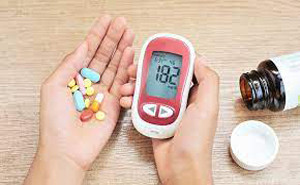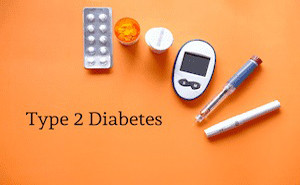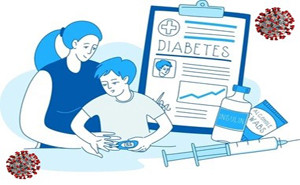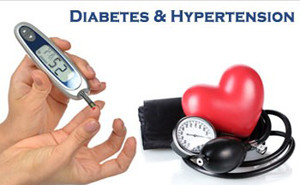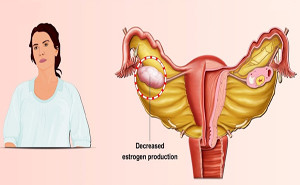Endocrine-disorders
Treatment guidelines for type 2
diabetes mellitus (T2DM) recommend initiating pharmacotherapy with an oral
antidiabetic drug (OAD) to reduce hyperglycaemia when diet and exercise are
inadequate.
International guidelines recommend
metformin as the first OAD, whereas Japanese guidelines recognize that other
OADs may be more appropriate i...
Diabetes Care: American Diabetes Association Journal
The standard pharmacotherapy for
management of type 2 diabetes mellitus (T2DM) involves initiation with
monotherapy (usually metformin) unless there are contraindications or
intolerance, followed by sequential addition of other single agents, when
target glycaemic control is not achieved o...
Children who are infected with
COVID-19 are at a higher risk of developing diabetes, according to a new study
by the Centers for Disease Control and Prevention (CDC). Increased incidence of
diabetes seen among patients aged younger than 18 years after acute COVID-19
infection versus those without COVID-19.
Key Summary
What is already...
The Lancet:
TAKE-HOME MESSAGE
It is well-established that blood pressure control is an
important strategy in reducing cardiovascular events among people with
diabetes.
This data analysis that included studies comprised of over
145,000 participants finds that a reduction of 5 mm Hg in systolic blood
pressure was associated with an...
TAKE-HOME MESSAGE
A case–control study examined the role of hormone
replacement therapy (HRT) in postmenopausal women, including 30 women
on HRT and 30 controls, in terms of salivary estrogen and mouth
dryness symptoms.
After 6 months, HRT appeared to restore
levels of salivary estrogen as well as reduce mouth dr...
TAKE-HOME MESSAGE
Menopausal hormone therapy has been associated
with various malignancies. In this Swedish registry study, the authors
investigated the use of menopausal hormone therapy and risk of colorectal
cancer.
The study found that Menopausal hormone therapy was associated with
overall reduced odds for co...
Conjugated estrogens/bazedoxifene
is a selective estrogen receptor modulator. Bazedoxifene stimulates estrogen
receptors in bone and has antagonistic effects in the breast and uterus. Conjugated
estrogens/bazedoxifene is labeled for the treatment of moderate to severe
vasomotor symptoms associated with menopause and prevention of postmenopausal...
DIET, PHYSICAL ACTIVITY, AND BEHAVIORAL
THERAPY
Diet, physical activity, and
behavioral therapy designed to achieve and maintain >5% weight loss
should be prescribed for patients with type 2 diabetes who are overweight
or obese and ready to achieve weight loss.
Such interventions should be high
intensity (≥16 sessi...
COVID-19
may elevate the risk of hyperglycemia and other complications in patients with
and without prior diabetes history. Individuals
with preexisting diabetes show higher incidence of COVID-19 illness and poorer
prognosis upon infection. Likewise, an increased frequency of diabetes onset
and diabetes complications has been reported in patie...
Diabetes, a silent killer, is a
leading cause of neuropathy. Around 50% of diabetic patients develop peripheral
neuropathy in 25 years. Painful diabetic neuropathy manifests as burning,
excruciating, stabbing or intractable type of pain or presents with tingling or
numbness. The pathophysiology of this
condition is due to primarily metabolic a...
Obesity is now recognised as a
disease that is associated with serious morbidity and increased mortality. One
of its main metabolic complications is type 2 diabetes, as the two conditions
share key pathophysiological mechanisms. Weight loss is known to reverse the
underlying metabolic abnormalities of type 2 diabetes and, as such, improve
gluc...
Insulin Initiation in Patients
with Type 2 Diabetes
Insulin initiation and titration is
a challenge for many primary care providers (PCPs) involved in the treatment of
patients with type 2 diabetes. What are ADA recommendations?The early introduction of insulin should be considered -· if
there is evidence of ongoing catabolism (weight...
